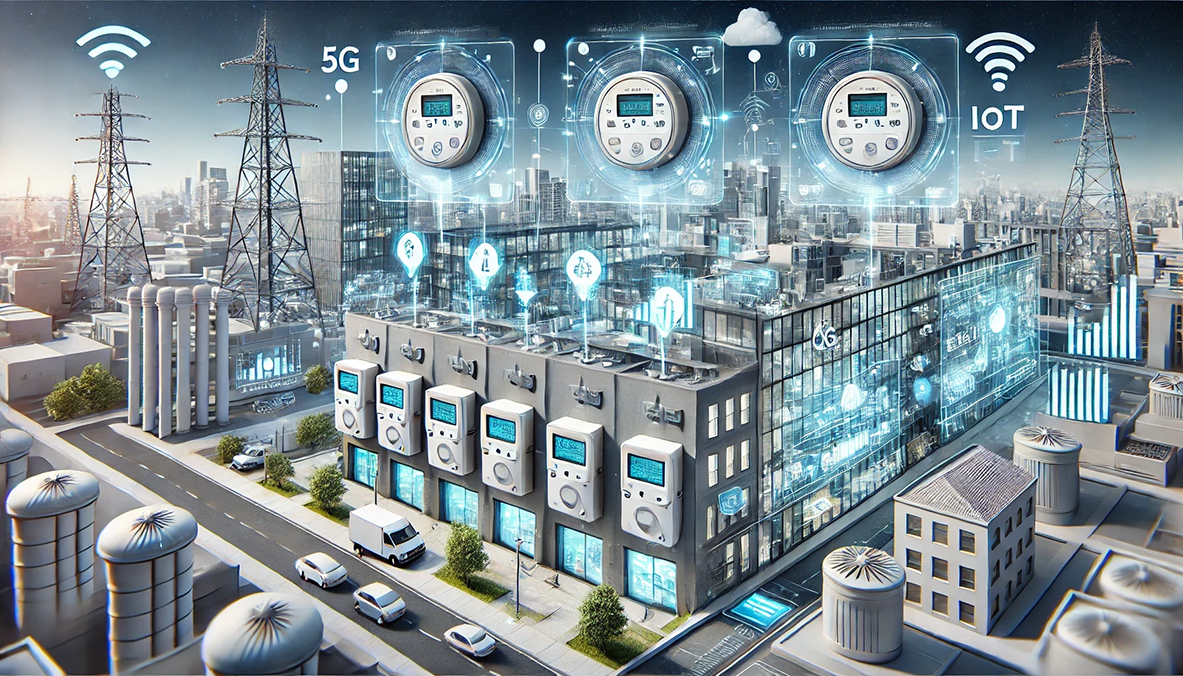Transforming Commercial Utility Management with Smart Meters and IoT
The future of commercial submetering is being reshaped by advancements in smart meter technology and the integration of IoT. These innovations are poised to enhance utility management, improve energy efficiency, and provide valuable insights for property managers and business owners. Here’s a look at how these trends are shaping the future of commercial submetering.
Smart Meters and IoT Integration
Real-Time Monitoring and Data Analytics
IoT-based smart meters offer real-time monitoring capabilities that allow for precise tracking of utility usage. These meters provide detailed insights into energy consumption patterns, enabling businesses to optimize energy use and reduce costs. Advanced data analytics tools process this information to identify trends and suggest optimization strategies, making energy management more proactive and efficient.
Remote Management and Control
IoT-enabled smart meters allow for remote management, which is particularly beneficial for property managers overseeing multiple commercial units. Remote access supports real-time adjustments, fault detection, and maintenance scheduling without the need for physical inspections, thus saving time and reducing operational costs.
Enhanced Connectivity and Standards
The evolution of connectivity standards, including 4G, 5G, NB-IoT, LTE Cat M1, and LoRaWAN, is crucial for the effective deployment of smart meters. These technologies offer robust, reliable, and long-range communication capabilities, ensuring that smart meters can operate efficiently in various environments. Enhanced connectivity also facilitates better integration with other building management systems, contributing to a more cohesive and intelligent commercial infrastructure.
LoRaWAN, in particular, provides a low-power, wide-area networking solution ideal for smart metering in commercial settings. It enables automatic metering data transmission several times a day through an Automatic Metering Infrastructure (AMI), allowing utilities to bill based on actual measurements. For commercial buildings, where multiple meters and large-scale operations are common, LoRaWAN's capabilities for advanced anomaly detection, such as leakage alarms and fault detection, are crucial. These features significantly improve resource management and reduce operational costs by ensuring efficient monitoring and quick resolution of any issues. Additionally, LoRaWAN supports remote meter reconfiguration and network monitoring, which are vital for maintaining optimal performance in complex commercial infrastructures.
Predictive Maintenance and Energy Optimization
Smart meters equipped with AI and machine learning capabilities can predict maintenance needs and optimize energy usage. By analyzing historical data and usage patterns, these meters can forecast potential issues before they occur and suggest maintenance actions to prevent downtime. This predictive approach not only enhances the reliability of utility services but also extends the lifespan of the metering equipment.
For example, predictive maintenance can be particularly beneficial for managing HVAC systems, which are critical in maintaining a comfortable environment in office buildings and retail spaces. By predicting and addressing issues before they lead to system failures, businesses can avoid costly disruptions and ensure a consistent environment for employees and customers.
Learn how these advancements are also transforming residential utility management in our post, 'Transforming Residential Utility Management with Smart Meters and IoT.
Applications in Commercial Settings
High Water and Energy Usage Scenarios
In commercial environments, smart meters can identify high water and energy usage scenarios, such as leaks or inefficient equipment. By providing detailed usage reports, businesses can address these issues promptly, leading to significant cost savings and reduced environmental impact.
Integration with Smart Building Systems
Smart meters are integral to the operation of smart buildings. They interact with HVAC systems, lighting, and other appliances to optimize energy consumption based on real-time data. For example, smart meters can signal HVAC systems to adjust heating or cooling based on occupancy, thereby conserving energy and reducing utility bills.
Conclusion
The integration of IoT technology and smart meters represents a significant advancement in commercial submetering, providing real-time insights, remote management, and predictive maintenance for efficient utility management and energy conservation. As these technologies evolve, they will play an increasingly crucial role in shaping the future of commercial utility management. For more information on how smart meters and IoT integration can benefit your commercial property, contact us or explore our utility management solutions. Stay updated on the latest trends by subscribing to our newsletter and joining the conversation on LinkedIn.
Engage with Us
Have Questions? Contact us for expert advice.
Join the Conversation: Follow us on LinkedIn.
Thank you for visiting our site. We look forward to helping you optimize your utility management!
